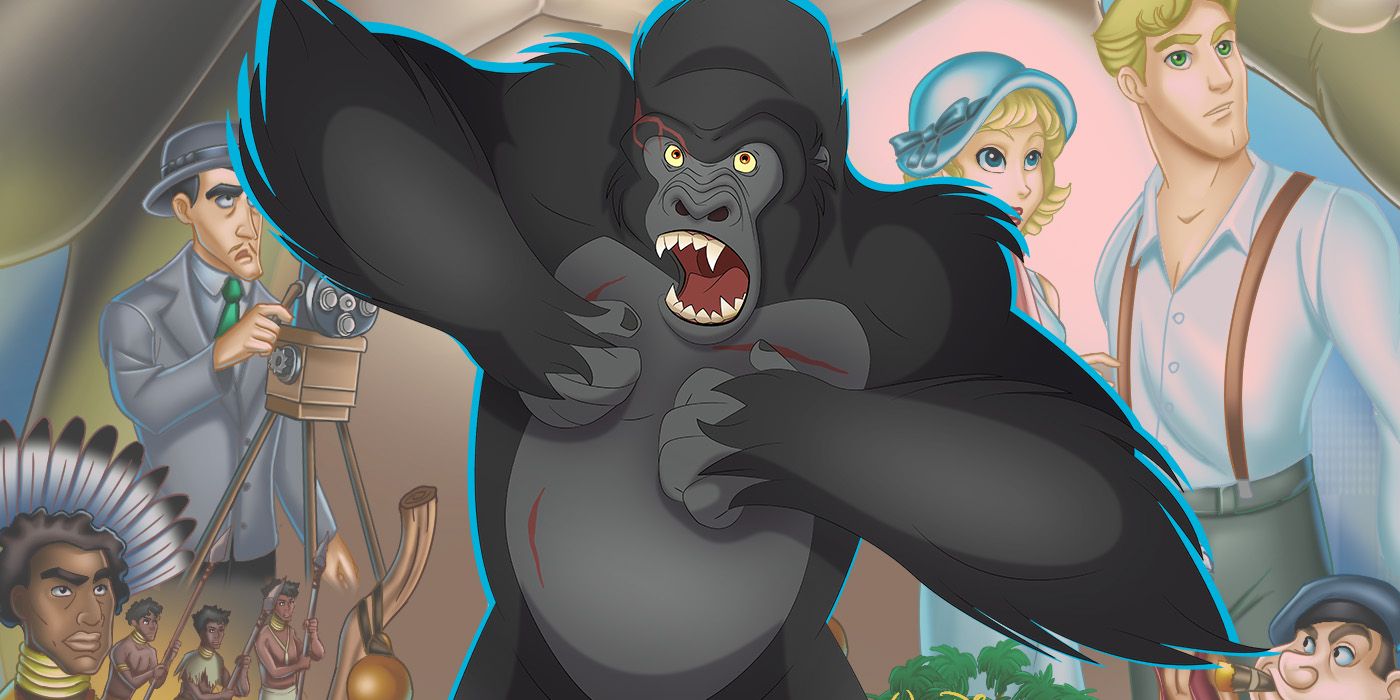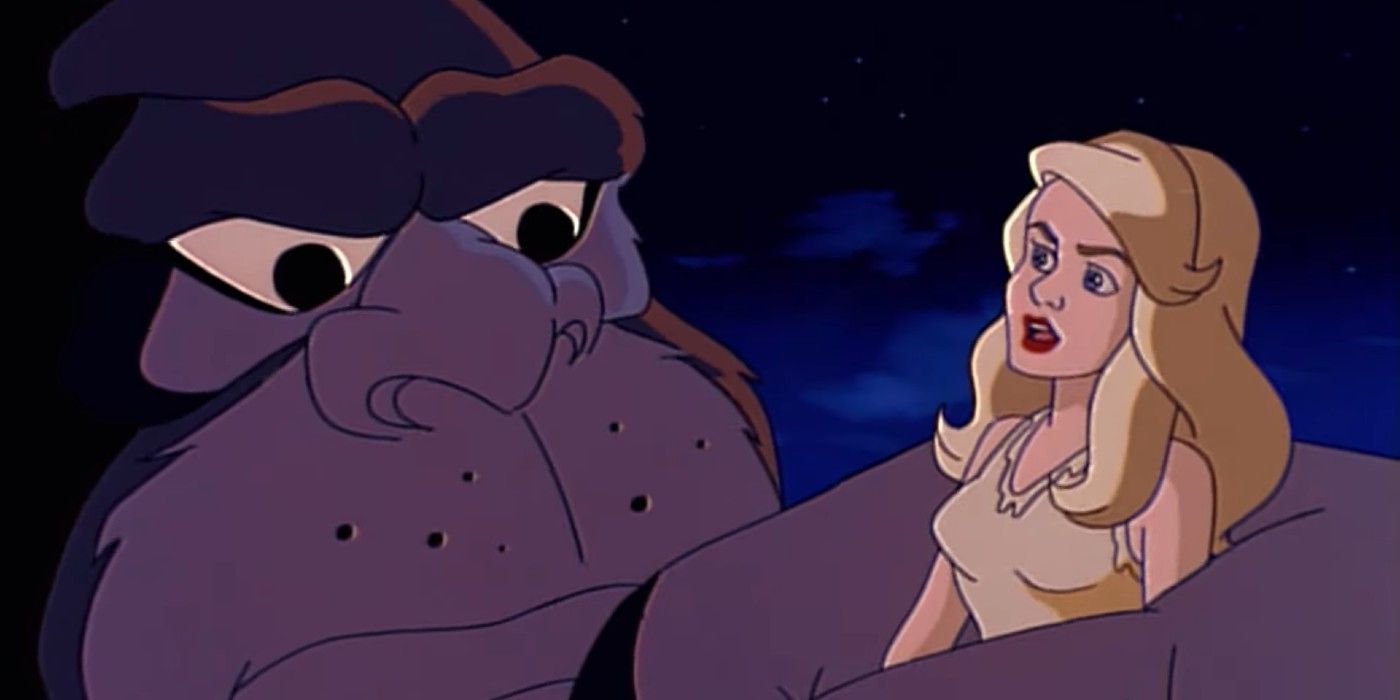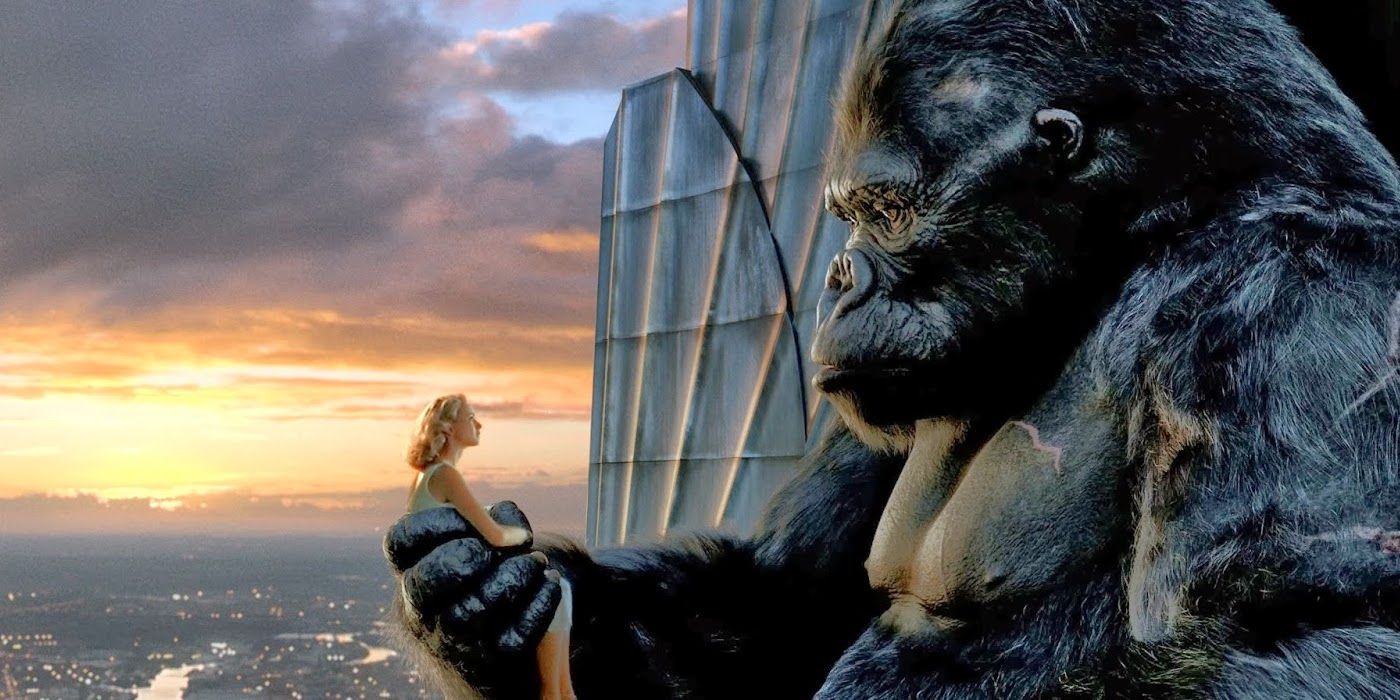As King Kong continues to remind audiences of the "Eighth Wonder of the World," there was a time in the '90s when a movie attempted to portray the tragic ape as a Disney fairy tale. Among the many films that attempted to channel the success of the Disney Renaissance, The Mighty Kong tried its hand at recreating the same magic. While not the first nor the last time King Kong entered the world of animation, The Mighty Kong had much to say about legends and how they're passed on.
As a bizarre tale of lost worlds, spectacle, beauty, and beasts, the story has been reimagined countless times since the original King Kong film premiered in 1933. Having headlined movies, comic books, TV shows, and even a Broadway musical, King Kong still stands as one of the most popular works to be adapted because of its complicated public domain status. Set to return in upcoming adventures like Netflix's Skull Island, Godzilla x Kong: The New Empire, along with a series on Disney+, there's plenty to look back on and look forward to as the great ape continues to inspire modern mythology.
How The Disney Renaissance Created The Mighty Kong
After 1989's The Little Mermaid acted as a return to form for Disney, the studio's works became reflected in other films. Following Disney's success, films like Don Bluth's Anastasia, 1999's The King and I, and other mockbusters became common. Joining the trend, 1998's The Mighty Kong tried to ride the coattails of Disney's fairy tales by turning King Kong into a family-friendly musical adventure with the same tropes, talents, and some less-than-subtle references to its contemporaries.
With The Little Mermaid's Jodi Benson starring as Ann Darrow and the Sherman Brothers providing their musical talents, The Mighty Kong aimed to capture the essence of a Disney film without the studio's direct involvement. The animated King Kong adaptation is filled with enough show-stopping musical numbers and blunt Disney-inspired imagery that the comparisons to films like The Little Mermaid were irrefutable. Jodi Benson's Ann Darrow portraying an island princess, along with singing sea creatures and bits of "Yo Ho (A Pirate's Life for Me)" within the film's scoring, gives the impression that The Mighty Kong is more of an imitation than a homage, made even more feasible by the release of Disney's Mighty Joe Young the same year. Despite its notable cast and Disney talent, the film became doomed to obscurity as an odd footnote in Kong's cinematic career.
Why King Kong Works as a More Modern Fairy Tale
The Mighty Kong's existence and obvious influences raise the question of what constitutes a fairy tale. When a "fairy tale" is usually referenced, it tends to conjure up imagery of fire-breathing dragons, noble knights, singing princesses, and towering castles. Although a fairy tale goes beyond its trappings and tropes, it's more about how the story is passed on from one generation to the next. King Kong's Beauty and the Beast analogies and countless retellings prove just about anything can be a fairy tale. As strange as it might be to think of King Kong as a Disney prince, a fairy tale is about how a story evolves, continues to inspire, and becomes a cultural cornerstone.
Magic can be found in the most unusual places, whether it's within stories like Creature from the Black Lagoon and The Little Mermaid or Pinocchio and Frankenstein. Not all fairy tales are one-size-fits-all or end with catchy songs and a "happily ever after." The Mighty Kong may have failed to be the Disney-infused feature it hoped to be, but it also proved that it's not always the story one tells that makes for a beloved classic: it's how one tells it.



